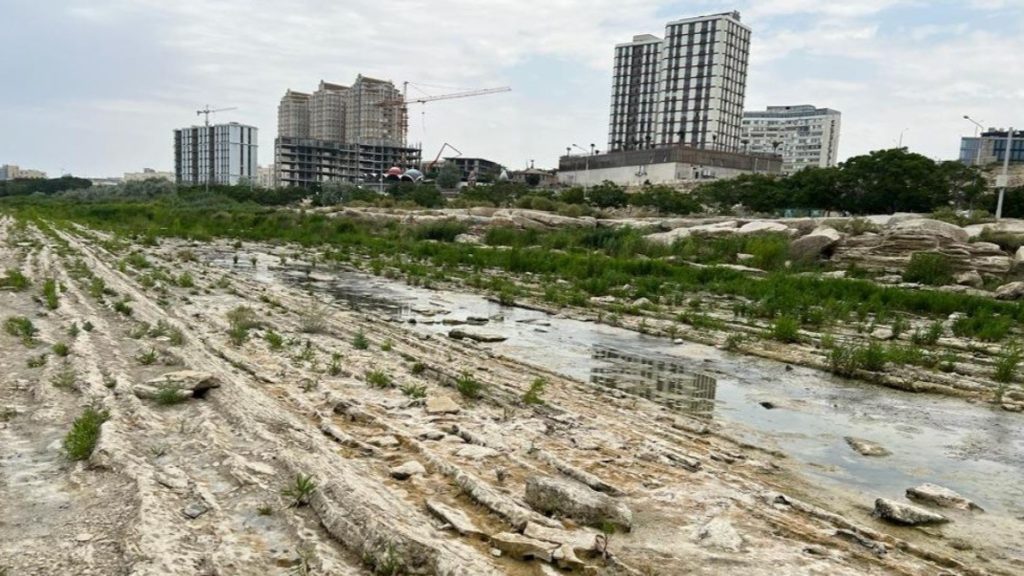Azerbaijan is raising urgent concern over the accelerating drop in the Caspian Sea’s water level — a trend that threatens to reshape the region’s economy, ecology, and long-term sustainability. The Caspian, the world’s largest salt lake, has been gradually shrinking for decades. But recent data reveal a worrying acceleration: its level has fallen nearly one meter in the past five years alone.
Deputy Ecology Minister Rauf Hajiyev confirmed that the sea is now declining at an estimated 20 to 30 centimeters per year. “The retreat of the coastline changes natural conditions, disrupts economic activity, and creates new challenges for sustainable development,” he said.
The Caspian Sea holds vast offshore oil reserves and is bordered by five major energy producers — Azerbaijan, Russia, Iran, Kazakhstan, and Turkmenistan. Its waters are a vital artery for trade, transport, and industry. But as the shoreline recedes, ports like Baku are struggling to accommodate large ships.
Already, ships face difficulties entering and maneuvering within the port, reducing cargo capacity and raising logistics costs. Oil transportation through the Dubendi terminal fell to 810,000 tons in the first half of 2025, compared to 880,000 tons a year earlier. While some of this decline stems from normal order fluctuations, dredging operations are now essential just to keep operations running.
To mitigate these effects, Azerbaijan recently completed construction of a new dredging vessel, Engineer Soltan Kazimov, capable of deepening seabeds to 18 meters. Yet, these are stopgap measures — not long-term solutions.
The reasons behind the sea’s shrinking are complex but interconnected. Russia attributes it mainly to climate change — rising temperatures that increase evaporation. Azerbaijan, however, also points to human intervention, particularly the construction of dams on the Volga River, which supplies about 80% of the Caspian’s inflow.
Reduced river discharge and altered precipitation patterns mean less freshwater reaches the sea each year. Combined with higher evaporation, the balance is tilting dangerously toward depletion.
The ecological consequences are equally grave. As the waters recede, wetlands, lagoons, and reed beds — vital habitats for fish and birds — are disappearing. The sturgeon, long prized for its caviar, faces catastrophic habitat loss, with up to 45% of its summer and autumn spawning grounds at risk.
The Caspian seal, already endangered, is losing its breeding grounds as seasonal ice fields vanish. A five-metre drop in sea level could wipe out more than 80% of its breeding sites; a 10-metre drop could render them virtually extinct.
The scale of the crisis extends far beyond Azerbaijan’s borders. Over 15 million people live along the Caspian coastline, relying on its waters for their livelihoods. Recognizing the urgency, Azerbaijan and Russia have established a joint working group to monitor and address the problem, with a formal program expected to launch soon.
But as water levels continue to drop, the challenge demands more than bilateral cooperation. The Caspian’s fate underscores a broader regional and global dilemma — how to balance energy development, climate resilience, and ecological preservation in an era of accelerating environmental change.
The shrinking of the Caspian Sea is not just a local issue — it is a warning signal for the planet’s fragile equilibrium.



